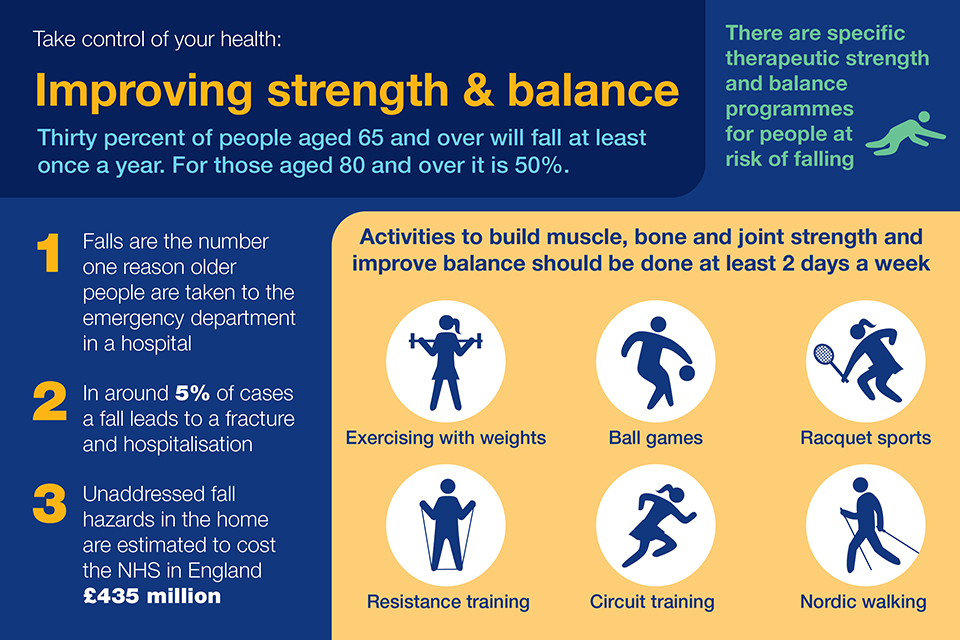Dementia Fall Risk - Questions
Dementia Fall Risk - Questions
Blog Article
Some Ideas on Dementia Fall Risk You Should Know
Table of ContentsDementia Fall Risk - TruthsSome Ideas on Dementia Fall Risk You Should KnowFascination About Dementia Fall RiskHow Dementia Fall Risk can Save You Time, Stress, and Money.
A fall threat assessment checks to see how most likely it is that you will drop. It is mainly provided for older grownups. The analysis normally consists of: This consists of a series of concerns about your overall health and if you've had previous drops or problems with balance, standing, and/or strolling. These devices evaluate your stamina, equilibrium, and gait (the method you stroll).STEADI consists of testing, assessing, and treatment. Interventions are suggestions that might reduce your threat of falling. STEADI consists of three steps: you for your danger of succumbing to your danger variables that can be boosted to attempt to avoid drops (for example, balance troubles, impaired vision) to lower your danger of falling by utilizing reliable methods (as an example, supplying education and resources), you may be asked several questions including: Have you dropped in the past year? Do you really feel unsteady when standing or walking? Are you stressed over dropping?, your copyright will test your toughness, balance, and gait, using the adhering to autumn assessment devices: This examination checks your stride.
If it takes you 12 secs or even more, it might imply you are at greater danger for an autumn. This examination checks strength and equilibrium.
The settings will certainly get harder as you go. Stand with your feet side-by-side. Move one foot halfway forward, so the instep is touching the large toe of your other foot. Relocate one foot totally in front of the various other, so the toes are touching the heel of your various other foot.
Unknown Facts About Dementia Fall Risk
The majority of falls happen as an outcome of numerous adding elements; for that reason, taking care of the risk of dropping begins with determining the aspects that add to fall threat - Dementia Fall Risk. Some of the most appropriate risk aspects include: Background of previous fallsChronic clinical conditionsAcute illnessImpaired gait and balance, lower extremity weaknessCognitive impairmentChanges in visionCertain high-risk medications and polypharmacyEnvironmental aspects can also boost the threat for drops, including: Insufficient lightingUneven or harmed flooringWet or unsafe floorsMissing or harmed hand rails and order barsDamaged or poorly equipped tools, such as beds, wheelchairs, or walkersImproper use assistive devicesInadequate supervision of individuals living in the NF, consisting of those that exhibit hostile behaviorsA effective autumn threat monitoring program requires a detailed medical assessment, with input from all participants of the interdisciplinary team

The treatment plan should also include interventions that are system-based, such as those that advertise a risk-free atmosphere (suitable lighting, hand rails, grab bars, and so on). The performance of the interventions should be assessed regularly, and the treatment plan revised as essential to mirror changes in the loss danger evaluation. Executing a fall risk monitoring system making use of evidence-based ideal practice can lower the frequency of falls in the NF, while restricting the capacity for fall-related injuries.
The 3-Minute Rule for Dementia Fall Risk
The AGS/BGS guideline suggests evaluating all grownups matured 65 years and older for autumn threat yearly. This testing contains asking clients whether they have dropped 2 or even more times in the read what he said previous year or looked for medical focus for a loss, or, if they have actually not dropped, whether they feel unstable when strolling.
People that have actually fallen as soon as without injury needs to have their equilibrium and gait examined; those with stride or balance problems should obtain extra analysis. A background of 1 autumn without injury and without stride or equilibrium troubles does not call for additional analysis beyond continued annual loss danger screening. Dementia Fall Risk. A fall threat analysis is called for as part of the Welcome to Medicare evaluation

The Buzz on Dementia Fall Risk
Recording a drops background is one of the quality indicators for loss prevention and management. Psychoactive medicines in particular are independent forecasters of drops.
Postural hypotension can usually be relieved by minimizing the dose of blood pressurelowering medications and/or quiting medications that have orthostatic hypotension as a negative effects. Use of above-the-knee assistance pipe and resting with the head of the bed boosted might also decrease postural reductions in high blood pressure. The preferred elements of a fall-focused checkup are displayed in Box 1.

A Pull time higher than or equivalent to 12 secs suggests high loss danger. Being unable to stand up from a chair of knee elevation without making use of one's arms shows enhanced autumn risk.
Report this page